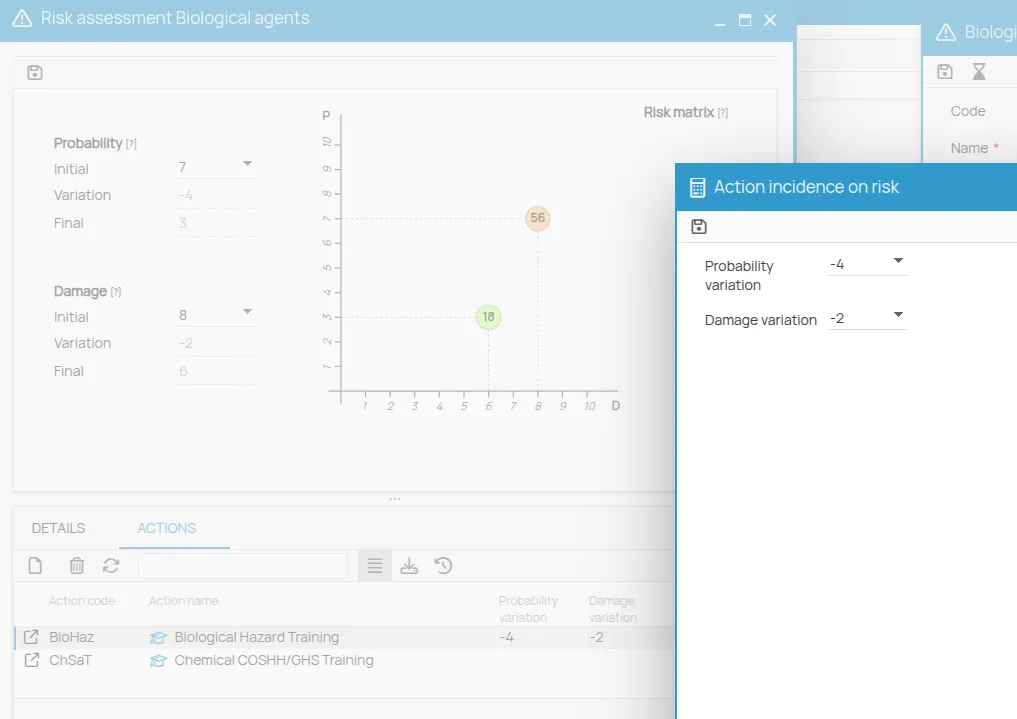Work Phases and Risk Assessment
Work phases are used to describe in detail the tasks performed by workers in different roles.
This is essential for identifying hazards associated with the physical resources used (work environments, equipment, and substances), and consequently, for identifying and assessing the risks to which workers are exposed.
Through this analysis, it becomes possible to define the most effective mitigation actions, also considering exposure time, in order to ensure adequate prevention and protect workers’ health.
To create a new work phase:
- Access the relevant office;
- Open the “Work Phases” menu;
- Click on “NEW”;
- Fill in the dialog with the required data;
- Save to add the new phase to the list.
Risk Assessment
Section titled “Risk Assessment”Risk assessment in 4HSE is carried out using a matrix, accessible via the button available in each risk entry.
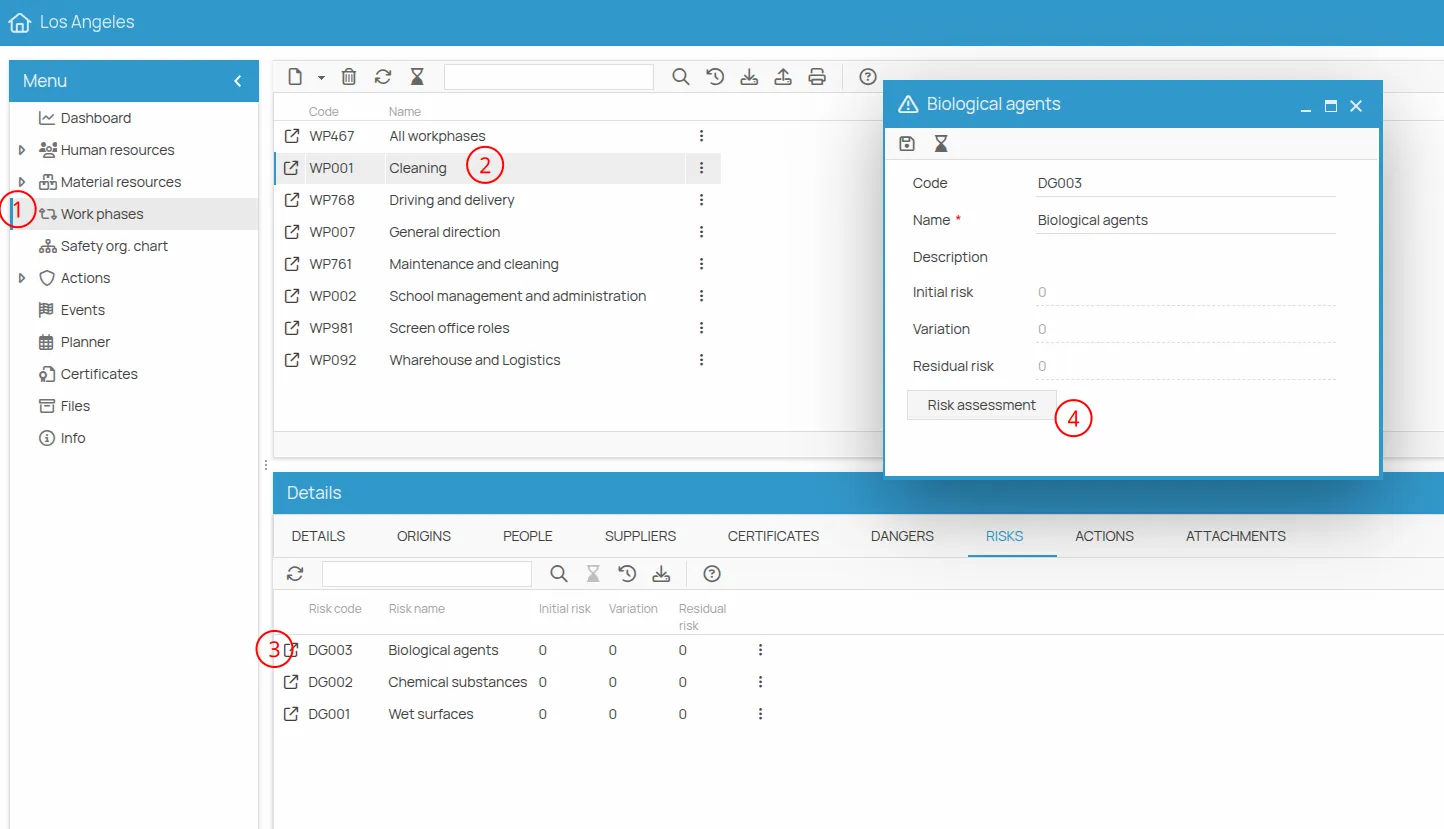
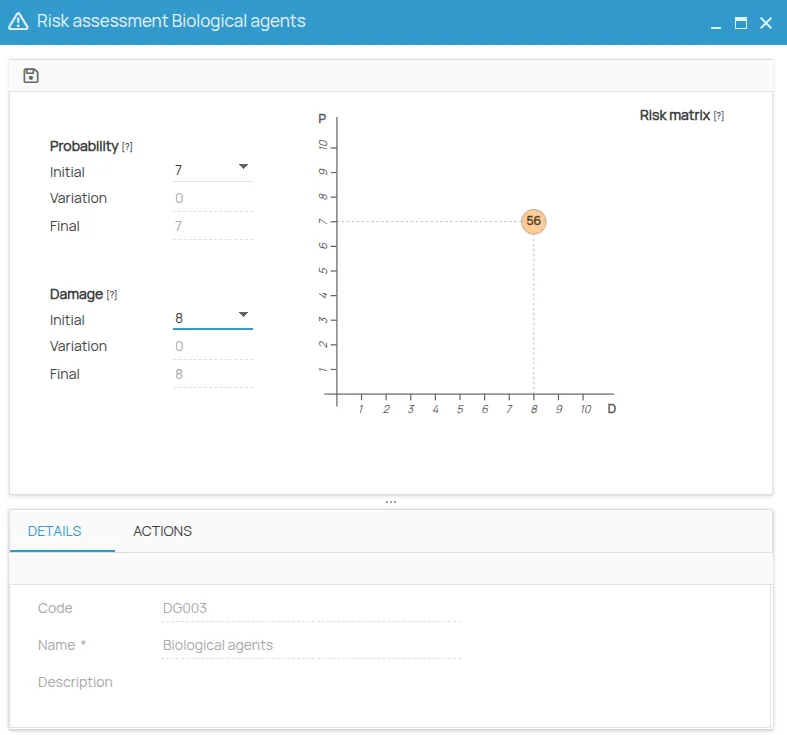
This matrix allows you to:
- Determine the values for Probability and Severity, which define the Initial Risk;
- Link mitigation actions, to which an impact value can be assigned;
- Calculate the Residual Risk, taking into account the effect of the applied actions. This value can be updated over time to reflect changes in operating conditions or prevention measures.
How to perform a risk assessment
Section titled “How to perform a risk assessment”- Open a work phase, then:
- Link the Sources (environments, equipment, substances);
- List the Hazards, by linking or creating them. If needed, enable the “Present” flag to indicate that the hazard is active in that phase;
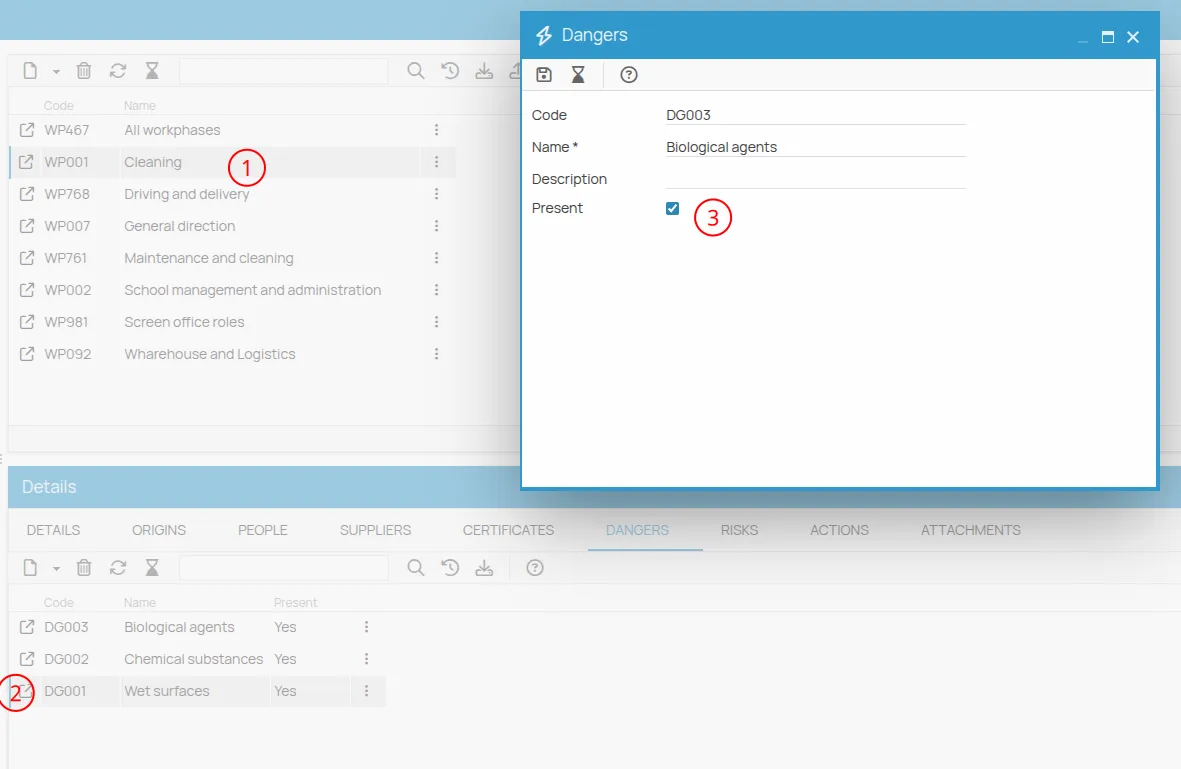
- Identify the Risks;
- Link the appropriate Mitigation Actions;
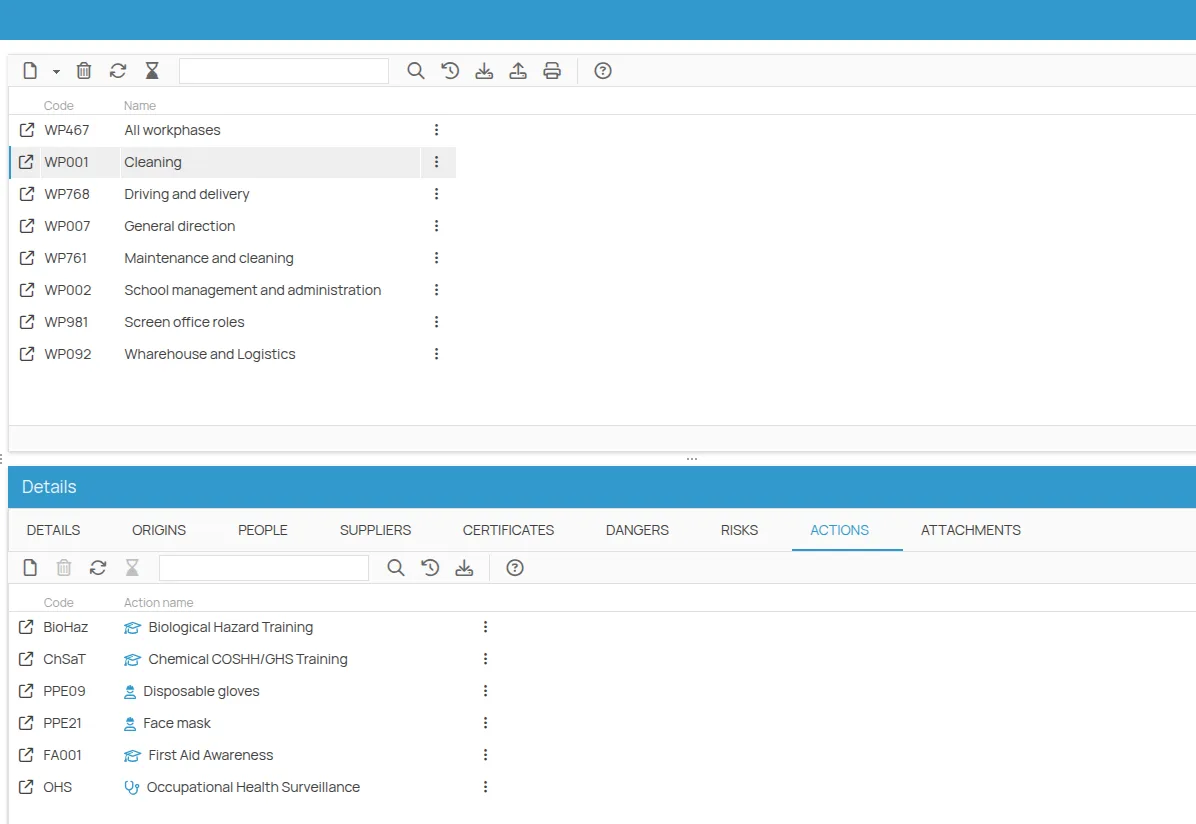
- Link the People involved in the phase;
- (Optional, for DUVRI) Link the Suppliers.
- Assess each risk:
- Enter the matrix by clicking on the “Risk Assessment” button in the Risk entry;
- Enter the Initial Probability and Initial Severity values to determine the Initial Risk;
- For each mitigation action, enter the impact on Probability and Severity to calculate the Residual Risk.
